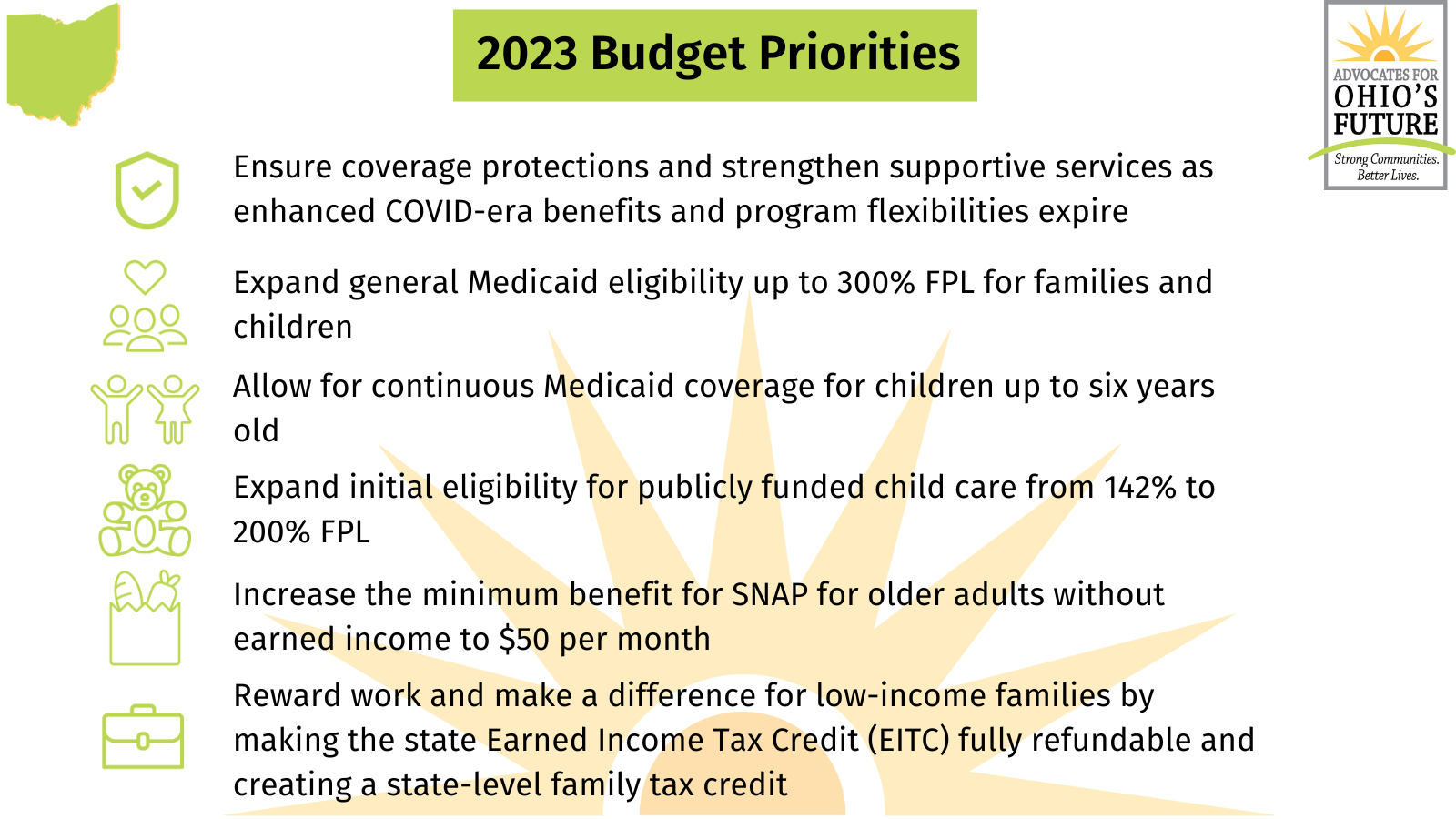by: Sarah Hudacek, AOF Policy Associate
Budget priority: Increase the minimum benefit for SNAP for older adults without earned income to $50 per month
In the Supplemental Nutrition Assistance Program (SNAP), a household’s monthly benefit amount depends on that household’s earned income, the number of people in the household, and any deductions the household is eligible for, like costs for child and dependent care, out of pocket medical costs, rent and utility deductions, and more.
In Ohio, only 50 percent of eligible older adults participate in SNAP. Of older adults who do participate in SNAP, some receive the minimum benefit amount of just $23 per month. Ohio has recently taken steps to increase participation among older adults, including implementing the Elderly and Disabled Simplified Application Project (EDSAP), which allows Ohioans 60 and older with no earned income to undergo the SNAP eligibility recertification process every three years, rather than every six months.
Supplementing the federally funded $23 per month minimum SNAP benefit with a state-funded boost to bring older adults up to at least $50 per month would remove another barrier to participation - the belief that the eligibility process isn’t worth the time and hassle for such a low benefit.
Early calculations indicate that the cost of a state-supplemented $50 minimum SNAP benefit for Ohioans aged 60 and older would be $21.4 million each fiscal year - a small price tag that could go a long way towards addressing food insecurity among Ohio’s older adults.
Other states are taking similar actions. In response to the end of SNAP Emergency Allotments, New Jersey is implementing a $95/month state-funded minimum benefit for all SNAP recipients, and Maryland has a $40/month state-funded minimum benefit for adults aged 65 and up, which was first implemented as a $30 state-funded minimum back in 2015.


